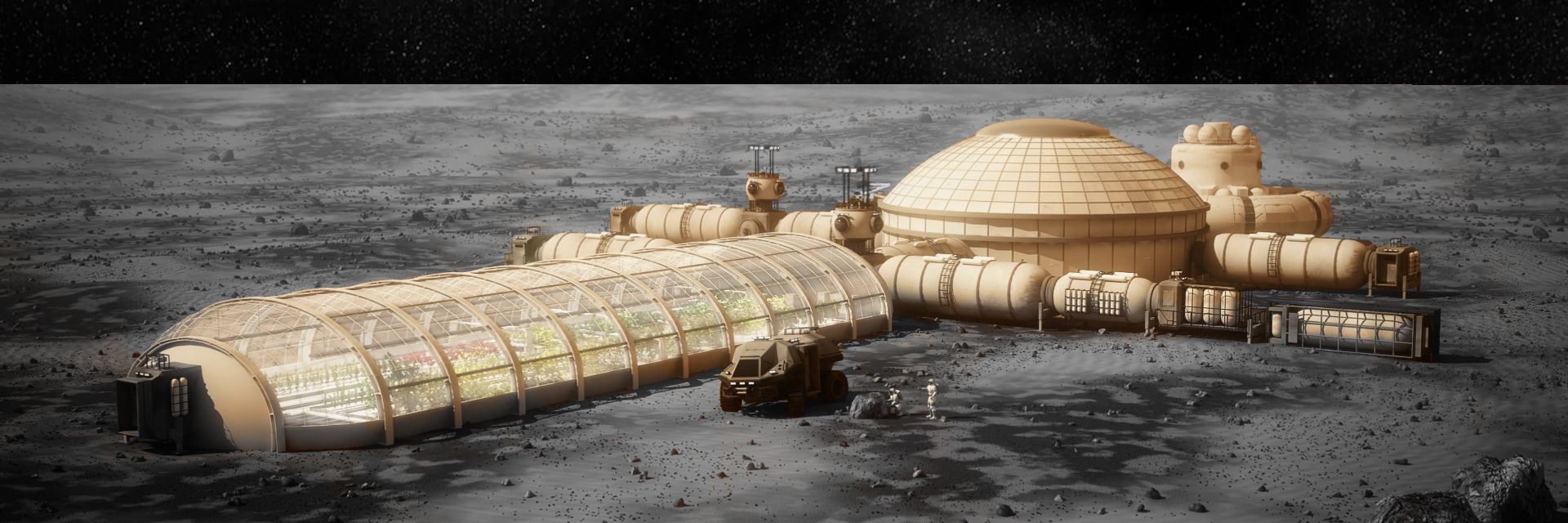Perhaps sooner than we might believe, human beings will spread out through the Solar System, colonizing the Moon, Mars, asteroids, and worlds beyond. We will take with us our human traits and needs – some geared less toward exploration and more toward tourism and recreation.
◊
Imagine this scene: An astronaut rides along the smooth regolith on his lunar Segway at speed, his wheels kicking up dust as he swerves around the odd rock. His voice is urgent. “Nearly there. Nearly there!”
He skids to a halt and alights, bunny-hopping over to a smooth open area surrounding a tall aluminum post and a red triangular flag. “Standby, OK! I’m here, let her rip!”
Some distance away in his bulky EVA suit, another astronaut adjusts his footing then takes a swing with his ‘One Wood’ sending a golf ball hurtling into the black sky.
“Fore!”
The golf ball sails the half kilometer with ease, hitting the ground with a puff of lunar dirt and leaps into the air again. The white ball makes another smaller bounce and rolls toward the pole. The first astronaut pulls the flag from its hole and steps back. Closer and closer the ball rolls and then sinks into the cup.
The cheers of several people break out over the comms channel: “A hole in one!”
These new colonies will rely on the ‘tourist dollar’ just as much as they do on trading launch services, oxygen, fuel, and minerals with Earth and other destinations. And this is not a bad idea.
With reusable rockets and commercial capsules, the price of launching payload into space is decreasing every day. And with regular shuttle flights from Earth to the Moon, and from the Moon to Mars, the cost margin per kilogram will fall. No doubt, the wealthy and adventurous people of Earth will see a great opportunity.
So, hang on to your space gear, and let’s take a look at how a vacation on the Moon only a few decades from now might unfold.
For more on what it takes to launch into outer space, check out Andrew Thomson's “Space: Getting There” (Season 2, Episode 2 of Space: The New Frontier).
Departure for Your Lunar Adventure
Imagine again for a moment, you are in the Space Gateway lounge in Texas. Your packed bag, with a limit of three kilos, is sitting beside you. One more time, you are flicking through the glossy brochure.
You’ve booked a seat on a three-day journey to Copernicus Base where you’ll stay for seven nights at the Hotel Aldrin. (To save time, you’ve decided on a direct flight rather than a stayover in low Earth orbit – so cliché nowadays.) You’re impatient to get started with the lunar sightseeing, a round of golf or two, the self-drive cross-country marathon, a dip in the new lunar pool, and, to top it off, ring-side tickets to the Colonial Athletics finals.
All for the tidy sum of $1.2 million – such a bargain! Your name is called over the intercom and, with a smile, you head for the loading ramp, your suitcase in tow.
Be Sure to Pay Attention to the Safety Instructions
Well, you are on your way. The launch was optimum as described in the training videos.
Strapped in with your fellow holiday makers and the expedition safety officer, you admire the Earth as it recedes. Now, you turn your attention to another precautionary video and a laminated safety instructions card explaining the Zero-G toilet and facilities.
For some the journey is more important than the destination, for others not so much.
After two and a half days of food paste and toilet accidents (you didn’t read the card as thoroughly as you should have), the Moon shines bright and desolate in the portholes.
Arrival at the Moon
You dock at the Gateway Station, high above the lunar surface. As the trade hub with Earth and other destinations, Gateway has grown over the years to a mammoth structure, with tank farms and landing craft ports, accommodations, and container facilities.
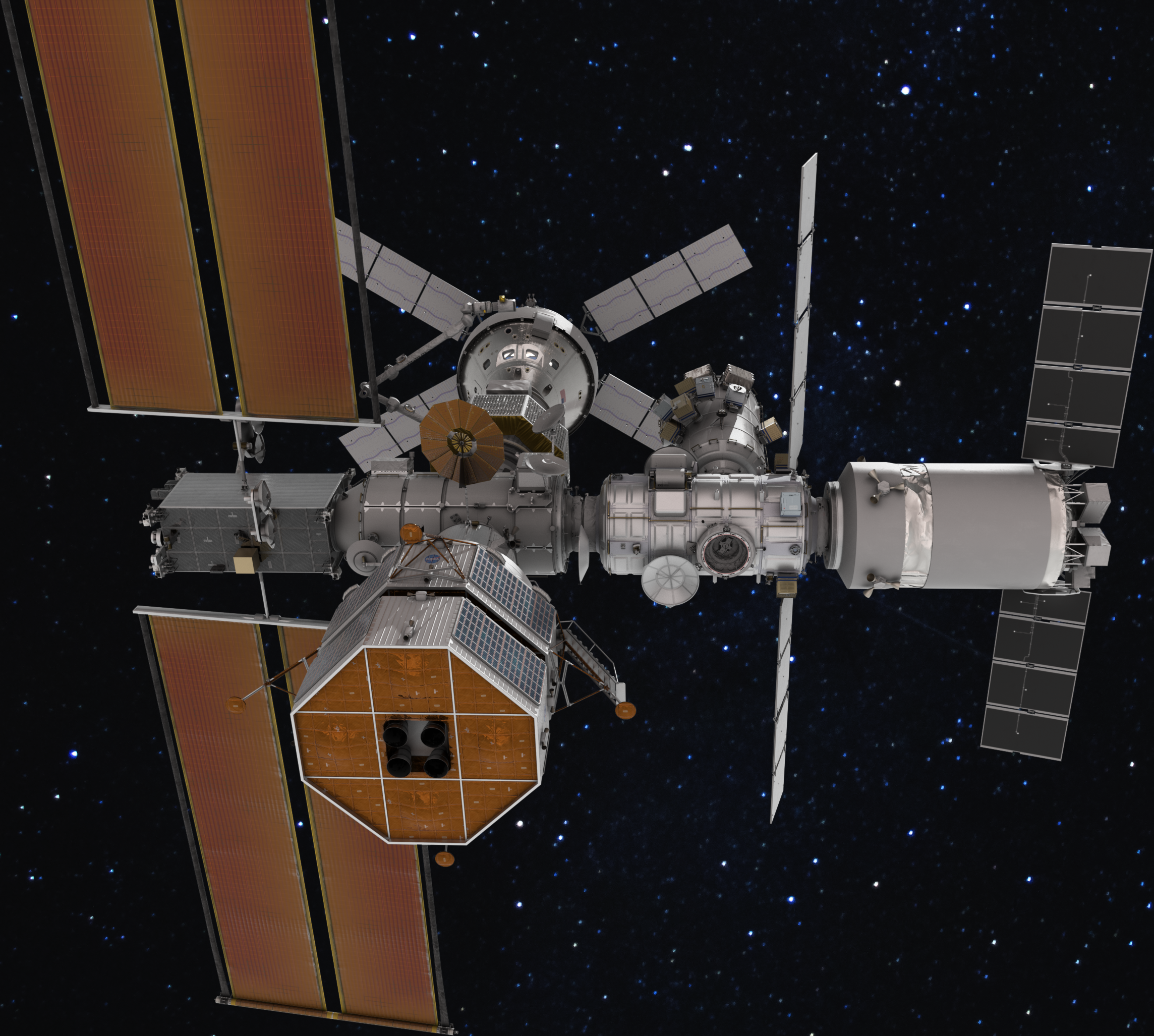
A view of the full Gateway configuration with Orion attached (Credit: NASA via
https://creativecommons.org/licenses/by-nc-nd/2.0/)
You quickly transfer to a Lunar Lander, so as not to get in the way of commerce, and before long you descend to Copernicus Base. The facility is white and gray, dotted with lights and landing pads. The main feature as you come in for an autonomous landing are the two massive glass domes set to the side of the main base. You disembark onto pressurized buses that will carry you to Copernicus Colony Station, and before long are greeted at Hotel Aldrin by the staff.
Each holiday-maker has their own suite and toilet, an upshot of years of studying isolated astronauts – it turns out they prefer to be alone when off duty. After a few hours rest, then a suit fitting, you board the Lunar Bus for our first activity: sightseeing.
Taking in the Sights
Everyone who comes here on vacation wants to visit the locations where the Apollo program astronauts walked and worked on the lunar surface. From Copernicus Station, it’s a mere 370 kilometers to the landing site of Apollo 12 and Surveyor 3. The area is a designated monument of special cultural interest and falls under the International Culture Protection Act. The area is cordoned off, but you can get close enough for some great selfies and videos.
Not far away, what’s left of Surveyor 3 is a little disappointing, as it’s been chopped up by the astronauts and parts of it have been returned to Earth for analysis. Not much left to see now.
Back on the Lunar Bus, you travel another 181 kilometers to the Apollo 14 landing site. It was actually the intended landing site for Apollo 13, but we all know what happened to that ill-starred mission! So, Apollo 14 filled the gap. Thankfully for golfing enthusiasts – it is also the home of the Alan Shepard Memorial golfing trophy, which you will be competing for later in your stay.
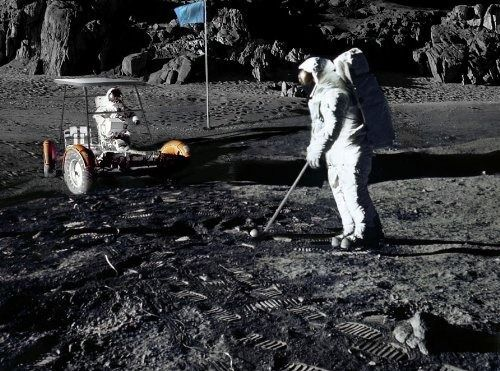
Apollo 14 astronaut Alan Shepard tees up on the Moon. (Source: NASA)
Climbing a ‘Mountain’ on the Moon
On the return journey, you stop in the shadow of a hill. From space it looks like a mighty jagged mountain range, on the ground just a hill. Tourists are encouraged to climb the slope for a fantastic view of Earthrise and Copernicus Base.
For those less enthusiastic climbers, Lunar Segways are provided. Not a bad view after your face plate clears from the moisture in your helmet. At one-sixth gravity, it is still a workout. Back to base, a change of clothes, and a drink at Buzz’s at the Hotel Aldrin (tourists are allowed to drink alcohol, as long as they bring it from home). A bit of quick math and visitors realize how expensive those drinks are, so most settle with soda or locally produced fruit juice.
Glass Dome Habitats for Flora and Fauna
The aforementioned glass domes are an engineering masterpiece – 3D printed hexagonal framework filled in by locally produced lead glass panels. Buckminster Fuller would be proud! One dome is used for food production for the colony; it smells of soil and manure, with lush greenery and crops maintained by robots.
The other dome is called the Habitat and is an oasis of Earthly life. The creation of another study of long-term space isolation, the structure is green and lush with decorative shrubs and hillocks. Small deer and goats chew on the grass, and rock outcrops are home to other animals. Most favored is the rare yellow-tailed rock wallaby; they can bound from rock to rock up to 10 meters here on the Moon.
Birds adorn the shrubbery and take gingerly to the air within the dome – an oasis for workers to breathe and relax after being cooped up in a mine or factory for months on end.
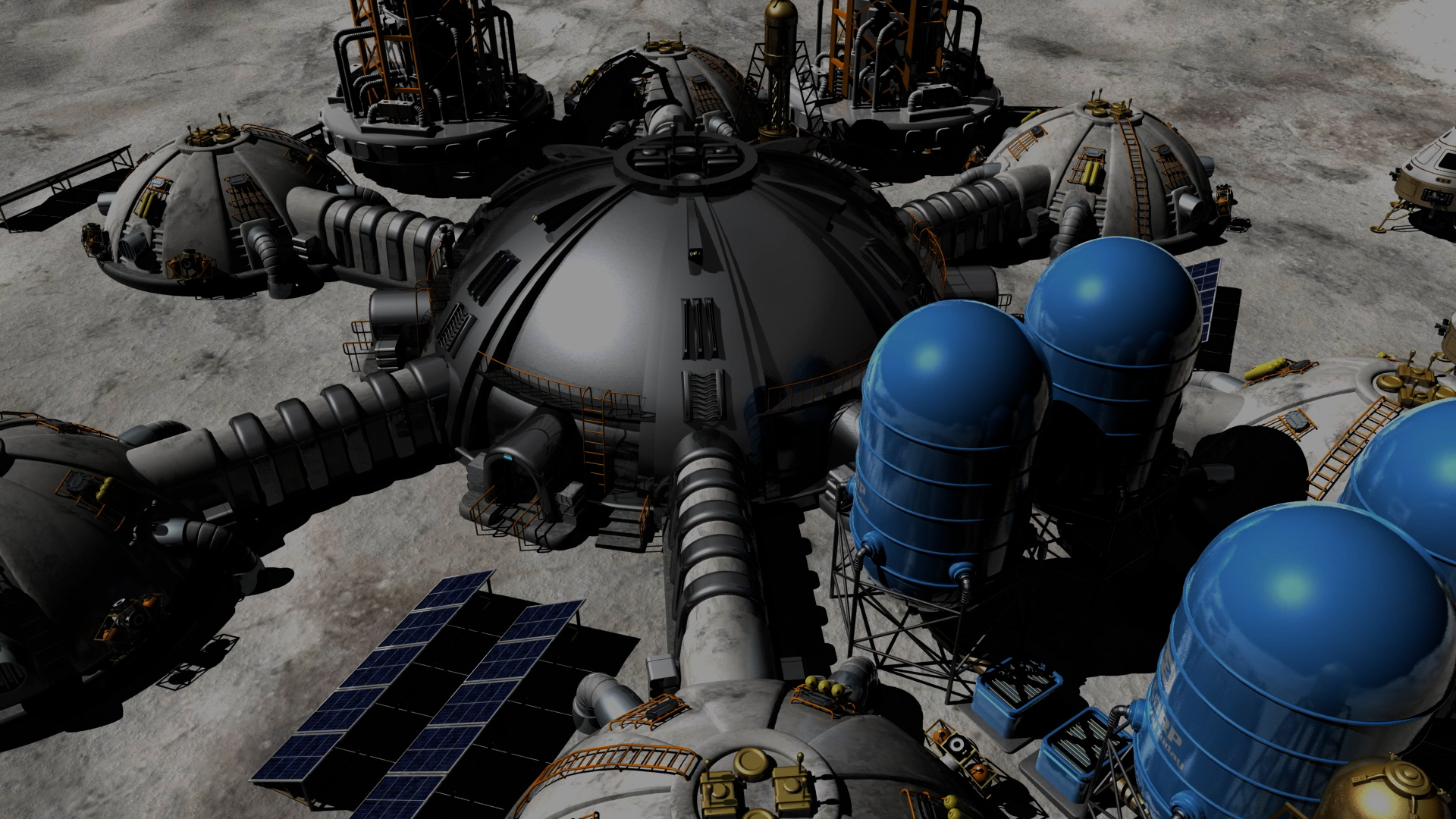
Lunar Track and Field Competition Peculiarities
There is a running track around the dome’s perimeter, which is where they hold the regular athletics program. You take a picnic on the grass, as lyrebirds swoon around trying for a free feed.
The runners are spectacular. Each stride is superhuman, and they regularly triple the Earthly world sprint record. The trick is not to launch themselves too high. When racing through a course of hurdles, though, the opposite is true. To make things fair, the hurdles are three meters high, so the runners must rely on launching themselves high and fast.
Long jump and triple jump have produced some eye-watering distances. The current lunar record for long jump is 52.81 meters! For high jump, 14.8 meters! Pole vault had to be eliminated from the competition, because athletes have actually hit the dome’s roof – and it’s a long way down to the landing cushions!
When the competitions end, you can have dinner by Earthlight in the restaurant. Then, to bed for a good sleep after an exhausting day. Tomorrow’s schedule features 18 holes of golf and a shot at that Shepard trophy. The following day will bring a dune buggy race in an electric six-wheeler careening through a 30-kilometer course – the buggies have upward-firing thrusters for the overly enthusiastic hill jumpers.
Planning Ahead for the Next Space Vacation
Like most great vacations that come and go in the blink of an eye, you’ll be wondering where to go next year. Mars is still pretty pricey at $18 million per seat, but you do get to stay a lot longer – the shortest stay is six months, due to orbital mechanics. Or how about asteroid mining outposts? OK, not so exciting.
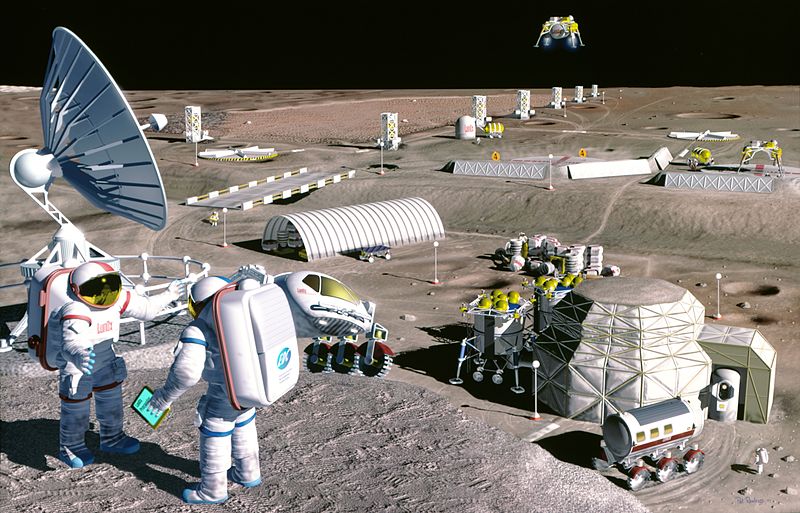
Artist’s rendering of a future Moon colony (Credit: NASA/SAIC/Pat Rawlings via Wikimedia Commons)
But here’s an idea: Halley’s comet will be coming around again, and there’s a once-in-a-lifetime opportunity to fly alongside it for six weeks. Think about it: Humans have been gazing up at Halley’s every 76 years since the dawn of time, and now, if the timing’s right, you can float about in an EVA suit and catch the gossamer ice crystals from the comet’s celebrated tail.
What a leap forward for human ingenuity – and profit margins!
Ω
Living in Melbourne, Australia, Andrew Thomson is a television production specialist with 45+ years experience in the broadcast and streaming industry. He has run his own production company, Astro Media, since 2004, producing original documentary programs for the international market. He is an animal lover and, for a hobby, has studied Paramedical Science. He occasionally works night shifts onboard an ambulance, looking to develop some sort of empathy for humans.
